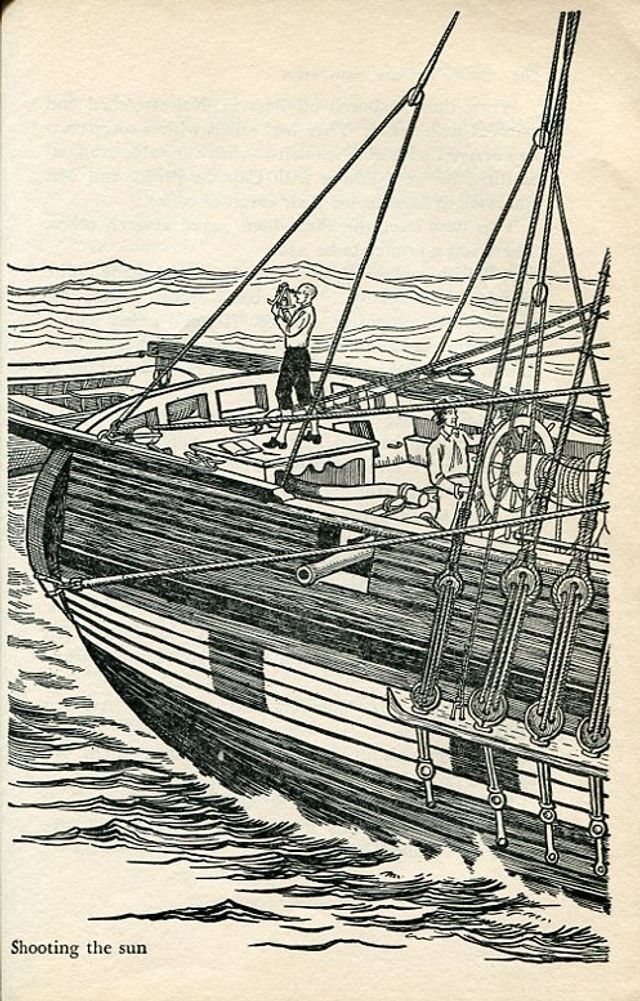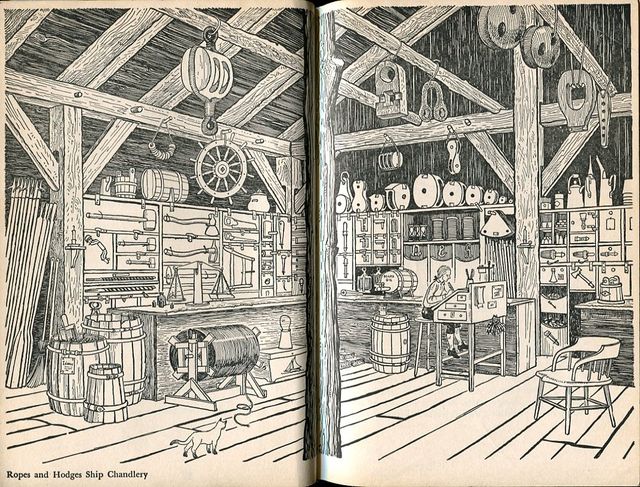-
Vijay Fafat
- Published on
A very warm, inspiring fictionalization of the life of famed American nautician (if you will, for “a mathematical ocean navigator”), Nathaniel Bowditch. While it is considered to be a novel for young adults, I recommend it for all; I certainly was glad to have discovered it.
“Nat” Bowditch, while not necessariliy a child prodigy, had a very quick mind and consistently surprised the adults around him with his facility for arithmetic. At one point, he learnt Latin through painstaking efforts just to read Newton’s “Principia”. Circumstances led him to a sailor’s life, where he excelled brilliantly. He learnt the craft of navigation well enough not only to correct the reigning standard reference (Moore’s “Navigator”. Reportedly, he found “8 thousand errors” in the calculations of Royal Astronomer, Nevil Maskelyn, in the tables) but also invent a new triangulation method to measure a ship’s latitude (“what if we take the position of the moon in relation to three stars?”) and longitude and boil down all of the calculations to such simple terms that even the common oarsman on the ship knew how to carry out the “lunars”. During long voyages, he undertook to teach every shipmate the art of navigation.
Bowditch ended up publishing an extensive, extremely accurate almanac in 1802 called “The American Practical Navigator”, so good it is evidently still carried on every commissioned US naval vessel as “a sailor’s bible”. As Bowditch proclaims in the novel,
“I’m going to write a book of my own. And it’s going to have three things these books don’t have. First, the tables will be correct! Second, every sea term, every manoeuvre, everything a man needs to know, will be explained in words any able seaman can understand. Third, I’ll put in tables so that any seaman can solve problems in navigation, even if he has to count on his fingers to add!”
References to arithmetic / mathematics appear throughout the book, including some spherical geometry in plain English.
The novel won a John Newbery Medal in 1956.
A few excerpts/paraphrases:
“Master Watson to Nate, at age 4: “Nat, if you knew half as much Latin as you know arithmetic, you could enter Harvard tomorrow!”
Nat tells a girl she has grown twice as pretty every year for 11 years. The girls exclaims,
“Goodness! I’m twenty two times as pretty!” and Nat corrects her to tell her she is 2^11 = 2048 times prettier.”
The girl tells him twice in the novel:
“You mathematician! I wish you could at least pay a compliment without arithmetic!”
And other excerpts:
“Doggone”, Herbie said, “it kind of picks a fellow up to think about the stars. Kind of makes you forget about soaking the sale beef till it’s fitten to eat, and about smelling the bilge water. Just think of me learning things! Me!”
“When he got back to his cabin, he would write down the explanation that had finally made sense to a man. Just so I won’t forget it, if I ever have to explain that again! He told himself. After three weeks, he had quite a stack of notes. He was making a new notebook, he realized, a very different sort of notebook. All his other notebooks just said enough to explain things to him. But this notebook said everything he had to say to explain things to other men — to the men who sailed before a mast.”
Nat glowed. “See! That’s mathematics! It should give you the right answer!” A compound interest problem solved for a lady, to her utter astonishment. “But that’s right!” Mrs. Pintard gasped. “To the last fraction!”. “Of course,” Nat told her. “That’s the beauty of mathematics. It’s exact.” Nat roared, “Mathematics is nothing if it isn’t correct! Men’s lives depend on those figures!”






